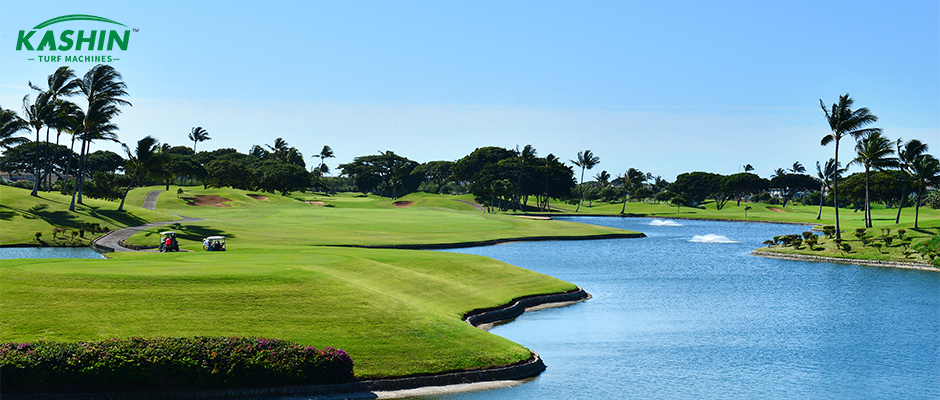Today we continue to share some suggestions on winter green overwintering management for readers’ reference.
E. Tree Management
The short days and falling temperatures in autumn provide grass with a signal: winter is coming. In order for grass to absorb as much nutrition as possible, other important factors must be considered. First, sufficient sunlight is a must. Light availability is critical for photosynthesis during the hardening process: without sunlight, photosynthesis is limited, resulting in low carbohydrate production, which reduces the grass roots’ ability to store energy. In addition, shade conditions have a significant impact on the winter freeze and thaw process, especially the onset of severe cold. During the cold months, the southern United States has low light levels, and radiant energy can be spread over a larger area. The impact of color light will gradually expand during the freeze and thaw cycle.
Evaluate the light intensity of various areas of the course (especially the greens) and maximize the use of east and south sunlight in these areas. Trees can modify the landscape of the course, but the principle is not to hinder normal course maintenance.
F. Drainage
It is very important to keep the turf surface well hydrated during the winter, especially in areas with large winter temperature fluctuations. Low-lying areas of the course can collect water and freeze quickly, directly causing the top of the grass to hydrate or be killed in low temperatures. Poor surface drainage performance of turf edges and putting areas has become a common phenomenon, and many turf managers will re-pave the area to minimize winter damage.
One method is to use a divot knife to comb the grass and subsoil around the greens, with the goal of building a “dam” to prevent water from running off. This type of work is usually done in late fall or early winter, so that the turf can quickly “recover vitality” when the course opens the next year, without worrying about the playability of the course. Such minor changes are relatively invisible on weekdays, but they are quite significant during night rains or freeze and thaw periods.
Lawn managers will also take interception measures for greens that are higher in terrain (more susceptible to erosion by river water or snow melt from runoff). Interceptor channels (including water inlets) can effectively intercept rainfall or snowmelt and ice. The setting of water inlets is crucial. During the cold months, the soil is frozen, and removing the stone interceptor channel may not fully receive the runoff water. The remaining water will flow to the green, increasing the risk of top hydration. The best way to locate the water inlet is to spend time carefully watching the water flow on rainy days, and then develop relevant tables based on different situations to determine which areas need to increase drainage facilities.

G. Ventilation and topdressing
Excessive covering (using straw mats or shade nets) will reduce the viability of the turf in severe winter climates. The top of the plant and other parts in contact with the ground cannot grow upward under extreme temperatures. In windy areas, too much thatch covering (more than one inch) will easily cause the turf to dehydrate and directly damage the surface of the lawn at a lower level. The thatch covering will penetrate when the lawn thaws, which will greatly increase the probability of top hydration. To control this variable, core cultivation and topdressing treatment are required. According to the domestic golf construction and maintenance network, winter fertilization is due to low temperatures, less bacterial reproduction, and less watering, which also reduces the amount of fertilizer loss. After winter fertilization, the amount of fertilizer applied in late spring and early summer of the following year can be appropriately reduced, and the amount of fertilizer applied throughout the year will not change much, and it can also reduce summer grass diseases. It also provides some solutions for winter fertilizer application: When the grass starts to turn yellow in winter, apply compound fertilizer at a rate of 15g/㎡ evenly, cover with sand in winter, and water thoroughly again. If white crystals appear on the tip of the leaves the next day, it means that the amount of fertilizer applied is too much. You can moisten it with a small amount of water, drag it with a thick rope, and then water it again. After watering, stop for 5-7 days. If the ground is frozen, no more watering is needed.
For many years, lawn managers have applied large amounts of topdressing to the grass at the end of the season, which has added a lot of pressure on the grass to cope with low temperatures. In theory, the top growth of the grass will be protected by a dry environment. The reason for the problem is the erosion of sand, and natural precipitation can wash the sand to the side of the lawn. Due to the accumulation of top fertilizer, the lawn is easy to form a resilient grass surface. Topdressing provides a firmer surface for the lawn, so the footprints of golfers are not obvious. The frequency and amount of topdressing should be based on the specific growth level of the grass species, and at the same time, the active growth points of the plants should be protected.
To a large extent, the work of preparing the lawn for winter is related to the green committee. Conventional topdressing can only provide a partial effect in protecting and improving the free drainage of the upper part of the soil structure. However, such a strategy must strike a balance between trying to protect the turf at the end of the season and providing playability. Turf managers also use black sand for topdressing to help control the temperature near the turf. By stimulating the nearby soil surface to produce higher temperatures to maintain grass growth, more carbohydrates are obtained, and more adequate preparation for wintering is made.
Post time: Dec-23-2024
